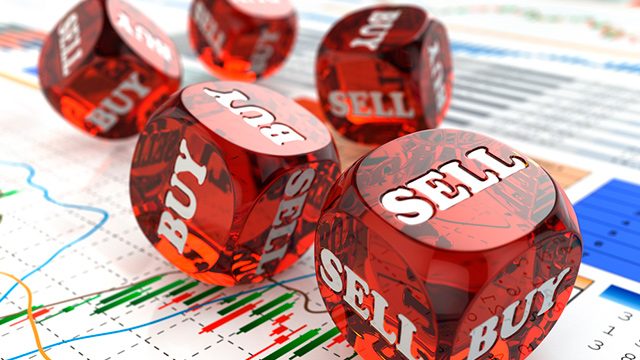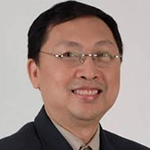SUMMARY
This is AI generated summarization, which may have errors. For context, always refer to the full article.

MANILA, Philippines – The year 2016 will be another turning point for the Philippines since a new president will be installed in June.
The new president is seen as fortunate to inherit a buoyant Philippine economy, which, if steered properly, will reap more gains for Filipinos.
Regardless of the outcome of the May 2016 presidential race, other countries are eager to do business with the Philippines due to its potential in various sectors.
Definitely positive
Experts forecast benign inflation over the next two years to move between 2% and 4%. This means interest rates will be kept at low levels, boosting the capacity of business to generate revenues. The low rates can lead to more employment and therefore will boost local spending.
The expected move of some factories in Japan to the Philippines adds to the economic confidence. Infrastructure spending and investments from the private sector continue. This is what long-term investors are holding on to – consistent government spending and capital formation by the private sector. Even ratings agencies are impressed by the resiliency of our economy. This is on top of an already robust personal spending.
And as historical data would show, the local equities market usually posts gains after a presidential contest.
The Philippine Stock Exchange Index (PSEi) retreated 31.53 points to close at 6,952.08 on December 29, 2015. It was also 3.85% lower than the previous year’s close of 7,230.57, which further widens the deficit of the total market capitalization versus gross domestic product (GDP).
If this ratio is used, the discount is somewhere between 15% and 20%. This is on the premise that the Philippine economy will grow at about 6% for 2015. (READ: NEDA chief: PH economy can hit 8% growth in next 6 years)
If this is to be followed, PSEi should get back to 8,000 points at least to make the ratio on a par, meaning the total market cap will be equal to the GDP. When the market is euphoric, this ratio can balloon to 150% over GDP.
Resilient
The bond market is expected to be resilient as well. Yields are expected to fall as supply could potentially increase, because local companies could find an opportunity to the situation by issuing more debt instruments to fund capital expenditures. Conversely, it creates more options for the conservative investors.
Interest rates on deposits will continue to be low and possibly slide down a bit further as the market continues to be awash in cash. And if this should happen, the natural tendency is for people to spend – another plus for the GDP figures.
Overseas, the US Federal Reserve hike will soon come to pass and the further upside is that the actual hike is below expectations. The interest rate hike being a tool to combat inflation gives a hint that the US economy is on the rise. Thus, the global economy will likely be positively affected.
On the other hand, critical to the markets will be the eventual elevation of China’s currency – Renminbi Yuan, to a reserve currency status in 2016. This will move the currency market and may create volatilities again to its equity markets. Japan continues it resiliency, recording a first breach of 20,000 points on its stock index – Nikkei 225 since 2000.
This achievement and its further upside prospects could spill over the rest of Asia. The dampener is the continued tension in the West Philippine Sea.

Golden opportunities
Gold and silver continue to slide as the greenback continues to strengthen as well. While it seems these metals are attractive nowadays, the slide may still persist. But not as much as it had this year. Hence, some analysts are suggesting to start accumulating these metals.
Platinum is now even lower than gold and is about to test its 2009 lows. This metal seems to be more attractive as it should be more expensive than gold. Base metals may continue to soften due to the challenges in China, but could possibly bottom out soon as their price attractiveness could not be ignored.
In the currency front, our peso versus the US dollar has breached the P47 barrier bringing some good news to our overseas Filipino workers (OFWs). For our monetary authorities, this is a welcome development as it provides cushion to the pressure of eventual return of capital and investments and the inflows that will be derived from OFW and business process outsourcing.
Our exports will be competitive at this time when other currencies are strengthening. This may persist in the early part of 2016 but soon will subside as long-term capital and portfolio investments start coming back. The remittances and BPO earnings will also provide pressure for the peso to appreciate.

Understanding volatility
Overall, 2016 holds a promise of another growth year despite the known risks.
External shocks more than internal issues are key to understanding the volatility of the market.
And when more of this happens, a long-term investor would have a heyday accumulating cheap assets as the local economy is poised to rise above the occasion.
The mindset is, if the Philippines was able to deal with the effects of the 2008 global financial crisis, what is the possibility that it cannot weather the next one?
Note that in 2008, the Philippines had yet to realize its investment grade status. Now that the Philippines has received such investment grades, we should be more resilient.
As for those who understand, such dips in the market only present an opportunity more than a concern. – Rappler.com
Got a question about personal finance? Tweet @rapplerdotcom or email us at business@rappler.com.
 Ricky So, CIS, RFP® has 25 years of experience in the financial services industry and is currently an independent financial adviser at Rampver Strategic Advisors and the Chief Knowledge Officer for Investment Planning of Wealth Management Center for Research and Communications, Inc. He is also very active in the financial services community, using his expertise in training financial professionals. Follow his blog, Reap What You Sow.
Ricky So, CIS, RFP® has 25 years of experience in the financial services industry and is currently an independent financial adviser at Rampver Strategic Advisors and the Chief Knowledge Officer for Investment Planning of Wealth Management Center for Research and Communications, Inc. He is also very active in the financial services community, using his expertise in training financial professionals. Follow his blog, Reap What You Sow.
Investment images from Shutterstock
Add a comment
How does this make you feel?
There are no comments yet. Add your comment to start the conversation.